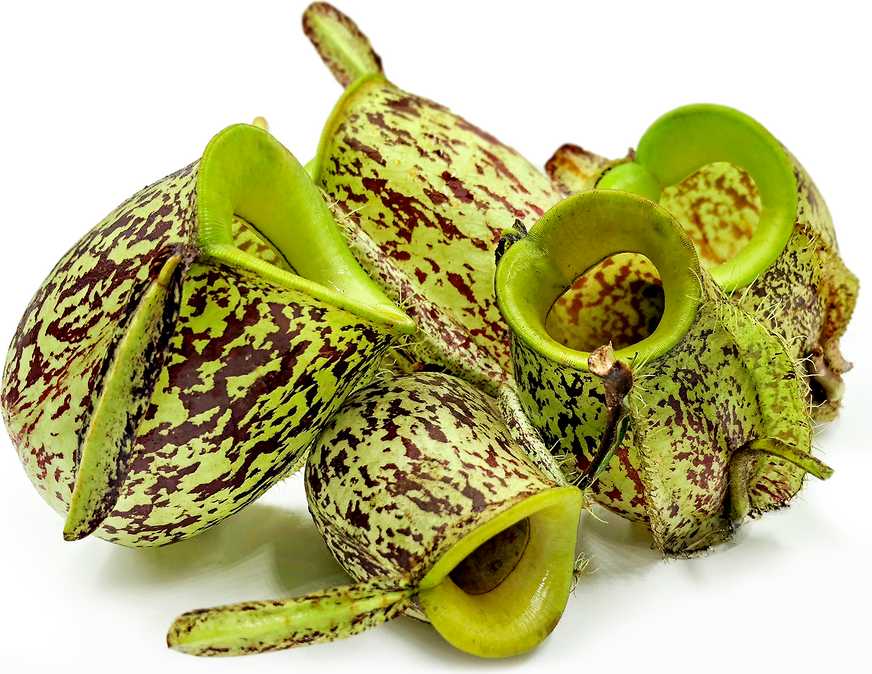


Pitcher Plant
Estimated Inventory, ea : 0
Description/Taste
Pitcher plants have wide spreading, smooth green leaves with tendrils that turn into modified leaves, or pitchers, which are globose, squat, and contain a jug-like basin, averaging 4-6 centimeters in diameter. The outside of the pitcher is bright green with slightly hairy edges and dark red speckling. The internal wall is also green and releases digestive enzymes giving the pitcher a waxy and slippery feel. Pitcher plants are typically low to the ground, and the lip of the pitcher is small and without a lid. When cooked, Pitcher plants are tender and slightly chewy with a grassy flavor.
Seasons/Availability
Pitcher plants are available year-round.
Current Facts
Pitcher plants, botanically classified as Nepenthes ampullaria, are a part of the Nepenthaceae family that contains over one hundred different varieties of Pitcher plants. Also known as Periuk Kera, Tropical Pitcher plant, and Monkey Cups, Pitcher plants use a combination of sweet smelling enzymes and water to lure insects into pitfall traps. Once the prey is trapped, the Pitcher plant uses its digestive enzymes to slowly break down its food and use it as a source of sustained energy. Pitcher plants also have the ability to use trapped fallen leaves as a source of nutrients. Pitcher plants are abundant in wild, tropical climates and are a popular snack item of indigenous cultures in Southeast Asia.
Nutritional Value
Pitcher plants contain some potassium, calcium, nitrogen, and phosphorus.
Applications
Pitcher plants are best suited for cooked applications such as steaming and roasting. They are traditionally plucked from the plant, cleaned, stuffed with rice, and steamed with coconut milk. They can also be wrapped and roasted. Pitcher plants pair well with rice, coconut milk, pandan, peanuts, and fermented shrimp paste. Pitcher plants will keep for a couple of days when stored in a cool and dry place.
Ethnic/Cultural Info
Pitcher plants are a traditional ingredient used in the cuisine of the Bidayuh, a tribe of several indigenous groups, in Sarawak, Borneo. These tribes stuff the pitchers with rice and coconut, steam it, and consume it as a snack. Some tribes also coat the pitchers in mud and cook the plant over an open fire. New variations of cooking Pitcher plants have been created using boiling and crock-pot techniques such as the well-known Lemang Periuk Kera, and with its increase in popularity, it is regarded as a Malaysian heritage food. In addition to consuming the pitchers, the roots are also used in traditional Malaysian medicine to reduce symptoms of stomach aches.
Geography/History
Pitcher plants are native to southeast Asia and are widely available in lowland tropical climates. Today, Pitcher plants are found in local markets in the Philippines, Malaysia, Singapore, China, Sri Lanka, India, Borneo, Thailand, and Sumatra.




